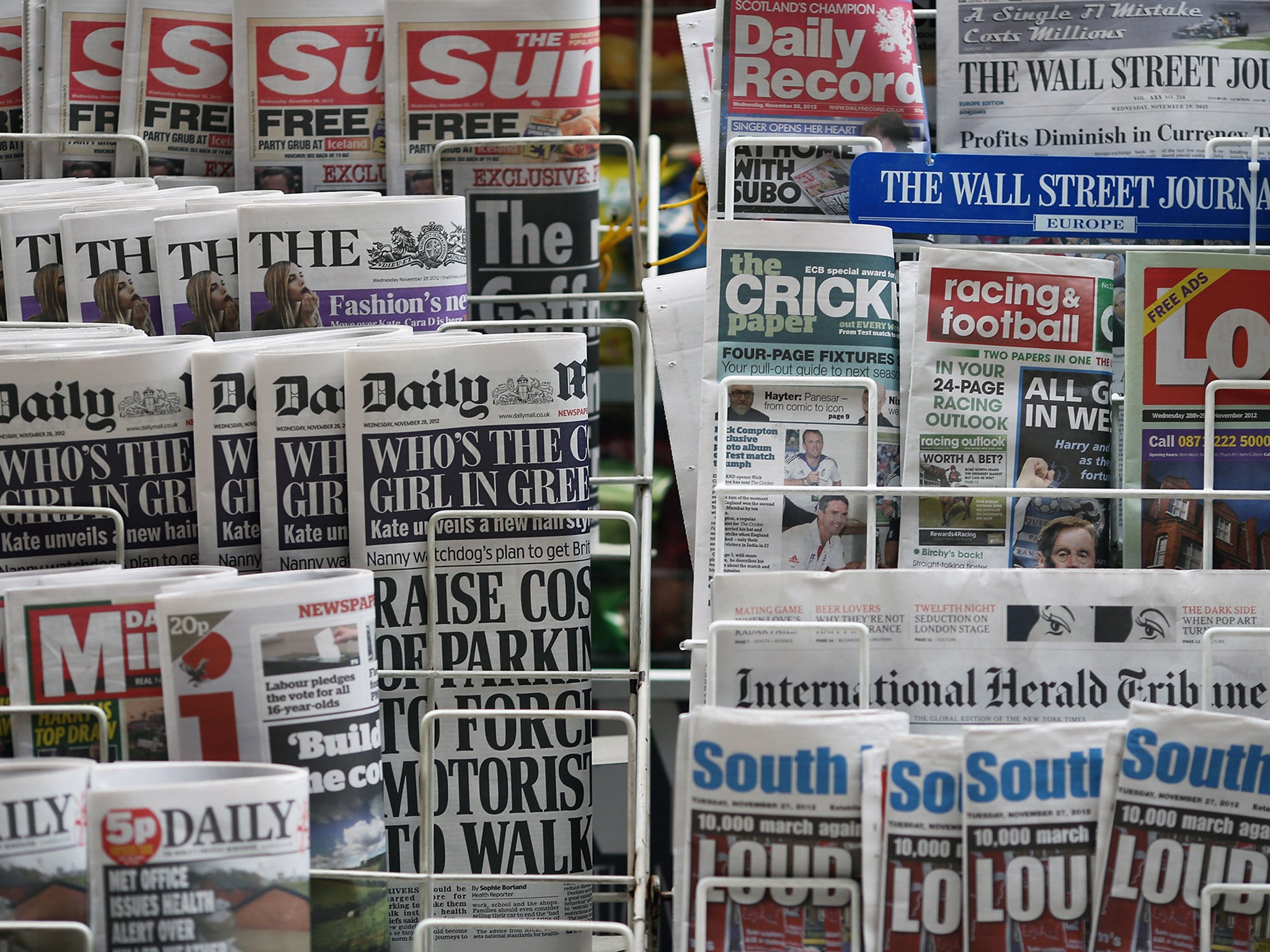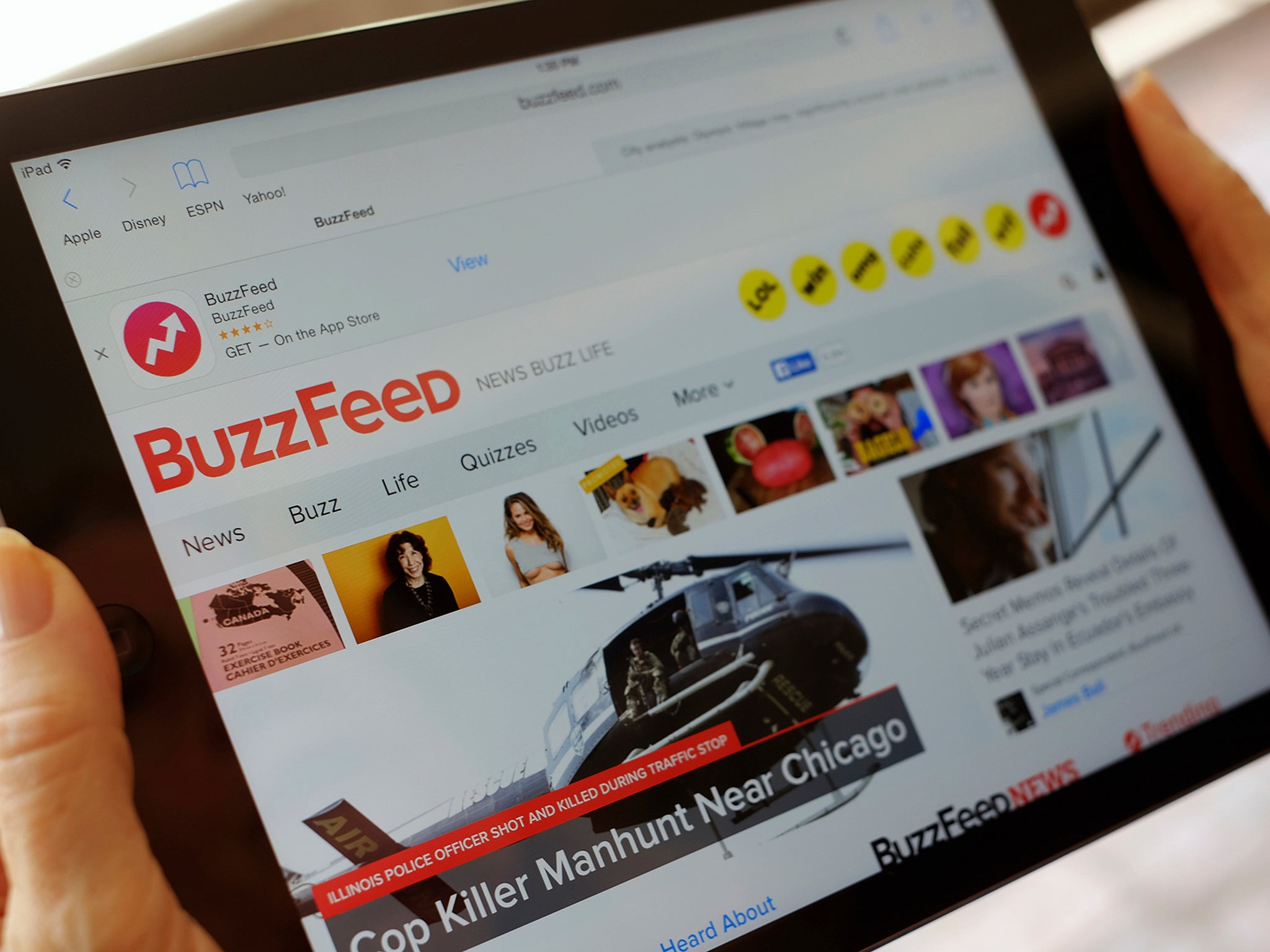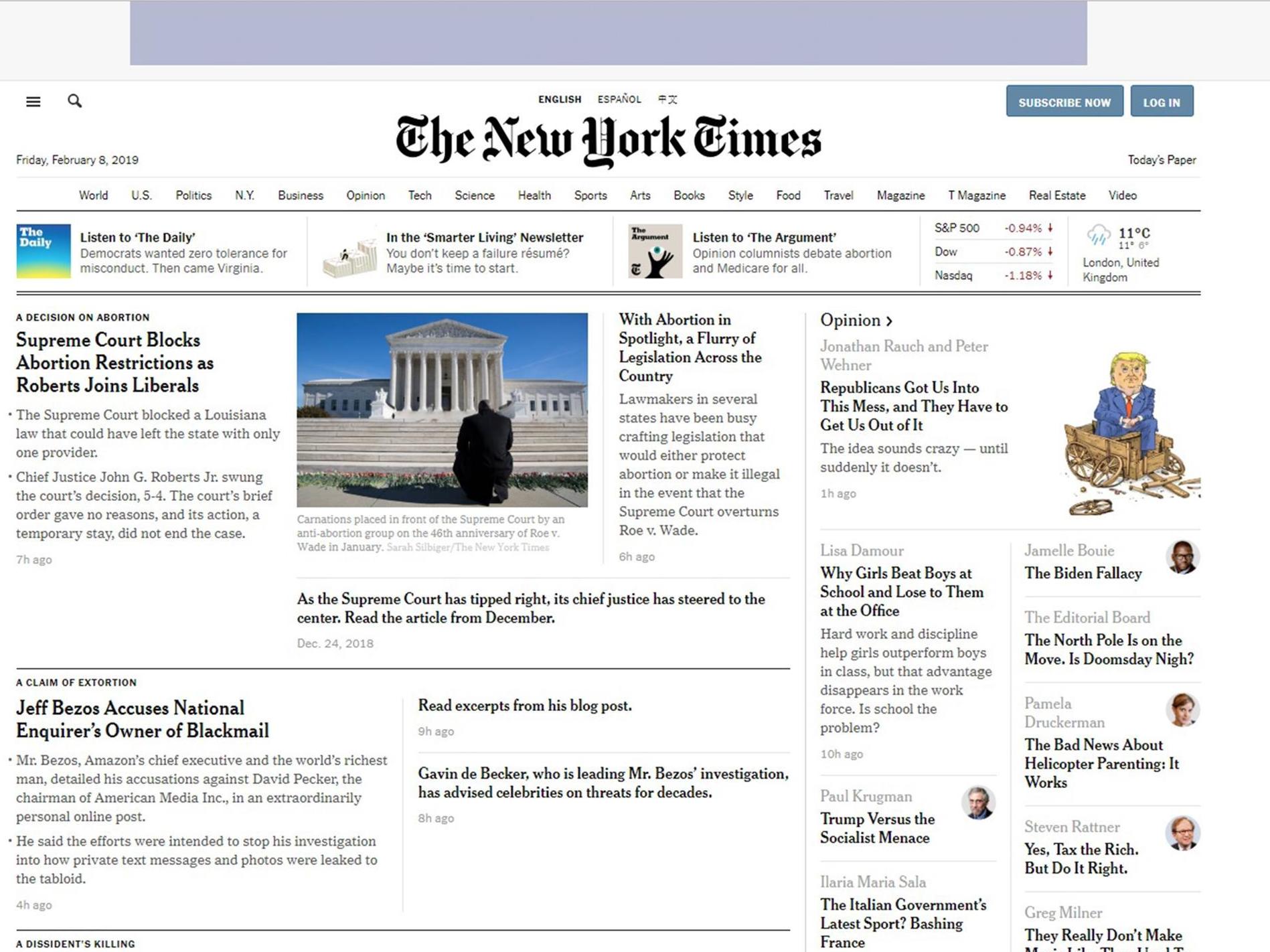If journalism is going to survive, readers will have to pay for it
The start of this year has been tough for online news outlets, with a raft of job losses and closures. But there’s bad news for readers too: if you want quality journalism, you will have to pay for it, says David Barnett


Imagine for a moment that you were a purveyor of fine cakes at the time when the internet really began to take off. Wondering how you could get yourself motoring along what we used to call, rather quaintly, the information superhighway, you hit upon an innovative business plan. The cake shop on the high street will remain open, and continue the model it’s always followed — selling cakes to customers over the counter. But you have set up a website, and anyone going to it can get your cakes absolutely free.
It’s the sort of business idea which, if you’d taken it to Dragon’s Den, would probably have resulted in Deborah Meaden filleting your spine from your body out of sheer rage. And yet, this is precisely how newspapers embraced the internet.
Fast forward to 2019, and as we step over the ragged cake-maker huddled against the wall of his former shop — now an artisan coco-pops cafe — we realise that anyone who’s reaching adulthood this year will have lived their lives feeling that paying for news is an alien concept.
Sales of physical newspapers and magazines are, year on year, not so much in steep decline as they are falling off a cliff.
For many readers, there is no inclination to pay a couple of quid for a newspaper when you can pick up your phone and read a lot of what appears in print for no money at all? It's hard not to conclude that the decision of the newspaper groups to put their content for free on the internet was the biggest mistake the industry ever made. Once people get used to having something for nothing, it’s an uphill struggle to get them to accept it has any value.
The decline of print media isn’t just to do with losing the money from the cover price of drastically reduced sales, of course. Income from the actual coins people gave to their newsagent in return for a newspaper has never formed the lion’s share of income — that, of course, has come from advertising.
The three big earners for local newspapers especially were the holy trinity of job, house and car ads. Many people will remember when their local newspaper doubled in size on the day those ads were in — huge pull-out supplements stuffed with situations vacant, homes for sale, motors on the market.
But almost simultaneously those three markets realised they could post their ads on the internet for a fraction of the cost and an immeasurably expanded reach, and when these ad revenues started to plummet that’s when the newspaper industry really started to suffer.
As someone who worked in the regional press during those early internet years, I know that the long-term plan was to migrate print advertising to newspaper websites, and in many places that has been done with a lot of success. But just as the internet itself caught a lot of traditional media organisations on the hop, so did the rise of alternative advertising platforms, particularly Facebook and Google.
And, not content with killing off print media, Facebook and Google also appear to have playe their part in killing off the new media organisations which came to prominence while the traditional mainstream press was dithering about how to handle the world wide web.
Places such as Buzzfeed and HuffPost, which appealed to younger users for whom the traditional media brands were not on the radar the same way they had been for their parents. Vice, which transposed its irreverent, edgy print magazine set up in the 1990s into an online media brand. The Pool, a woman-centric site set up by broadcaster Lauren Laverne and glossy mags editor Sam Baker in 2015, which won a legion of loyal fans.
These platforms offered an alternative to the old guard and employed some of the best writers around. Many had also worked for the most successful mainstream media online brands — the Guardian, notably — but the pollination worked the other way, as those who cut their teeth on Buzzfeed or the HuffPost found jobs in the mainstream press.
It seemed, for a couple of years, that online news — and features, comment and photojournalism — was settling itself into the new establishment. The Daily Mail, long the print bible of Middle England, found a new, younger audience through relentless celebrity gossip and highlighting wobbly bits on famous women’s thighs. This very organ, The Independent, closed its print operation and went wholly online through a traditional website and a subscription-based app.

Last month, Buzzfeed announced it was laying off 15 per cent of its workforce, amounting to about 250 people. HuffPost’s owner Verizon — which also owns the Yahoo and AOL brands — said it was losing around 800 people worldwide. And at the end of January, The Pool went into administration after lots of discontent about freelancers and staffers not being paid.
The Pool’s last standing director, Dominic Hill, told staff that the company, which posted losses of £1.8 million in the last financial year, was officially insolvent and all ideas for rescue plans had been exhausted. Buzzfeed boss Jonah Peretti said that revenue growth was simply not big enough to be sustainable in the long run.
It seems that while the internet is infinite, the money thrown around it is not. Just as the traditional media saw its advertising revenue leaching away to the new kids on the online block, so the new media is seeing its share sucked up by the ever-expanding behemoths of Facebook and Google, and by other competitors. And when the money goes away, the bulk of the cost-saving measures fall to the most expensive part of any media organisation: editorial.
This might seem blatantly obvious, but it’s worth reiterating. Just because you’re reading your journalism for free, that doesn’t mean it’s free to produce. It isn’t. Journalism costs money, whether that’s staff wages or freelance bills. Every single piece of content you read has been paid for, in some way, by the organisation providing it to you. If they can’t make money through advertising revenues (or by other income; from subscriptions, membership schemes and so on), then they cannot pay journalists. And if journalists don’t get paid, then they can’t do the work.
Right now, someone reading this will be thinking, “Aha! But information wants to be free!”

And so it does, at least according to the writer and activist Stewart Brand, who is credited with coining the term at a conference for computer hackers back in 1984. It’s a much-debated and rather ambiguous phrase. Some take it to mean that information flow should be unfettered and unrestricted, especially by governments and corporate interests. Others, that it should quite literally be accessible without any cost at all.
There’s perhaps logic in the latter train of thought, especially if we consider that the acquisition of knowledge should be a level playing field. If you can’t afford to access news, does that mean you shouldn’t, while those who have the means to pay can? Isn’t that just creating yet more divisions in society?
And yet… ’twas ever thus. Pre-internet, there was no way to access journalism without paying for it one way or another. Newspapers? The price on the cover. The BBC news? Via your license fee. Commercial radio or TV, or the free newspapers shoved through your letterbox? You “pay” by having enduring advertisements.
Information in the form of journalism has never been free, purely because people have to be paid to produce it. And with the traditional method of financing that — advertising revenue — going to platforms where it is not reinvested back into journalism, then what is going to happen?
The answer may be the dilution and eventual death of journalism as we know it today. News, or at least the events that become news, will still happen, of course. But if a tree falls over in a forest, and there’s nobody there to write a 1,000 word hot take about it, does it still make a noise? We’ll never know, because we won’t ever know about it until we find the fallen trunk.
If the trained journalists go, and the media organisations fail, there won’t be a complete absence of news because information, like nature, abhors a vacuum. But where will that information come from? Who will gather it, and for what purpose? Who will profit from you reading it, and in what way?
If the trained journalists go, and the media organisations fail, there won’t be a complete absence of news because information, like nature, abhors a vacuum
Earlier I said that print media circulation figures have fallen off a cliff, and so they have. But they haven’t smashed to bits on the rocks below just yet. People — and they possibly might be from a dying generation — are still prepared in some numbers to pay for physical copies of newspapers and magazines. And perhaps those who aren’t, who prefer to get their journalism online and for free, might have to face up to the fact that they might have to start shelling out as well.
Maybe information wanted to be free 35 years ago, but now perhaps it’s us that demands information be free, because many of us have known nothing else. I said that giving content away for free was the worst mistake news organisations ever made, and now that particular genie is out of the bottle, it’s not for going back in.
Or maybe not. The genie was always put back in the bottle in the end in the old stories. And despite the perceived wisdom that once you give someone something for free you can’t start charging for it, many media organisations are doing just that.
British newspapers such as The Times are behind a paywall, the Telegraph runs subscription-based premium content, the Independent has its Daily Edition app and Independent Minds offering (which gives subscribers extra, exclusive content, access to events and other privileges). Tech magazine Wired announced a paywall for new content last year. But the biggest success story so far is the New York Times.
The NYT announced its revenue figures for 2018 on 6 February and they gave hope to many in the industry that paid-for digital journalism might not be the fantasy some people fear. The NYT’s digital revenue has jumped to $709 million for the year; included in that are the earnings from those who pay for digital subscriptions to the newspaper and its associated products. Throughout 2018, 4.3 million people paid to access its online content, an increase of 27 per cent on the previous year.
And there was another major milestone, one which newspapers have been working towards since the very infancy of the internet: online advertising, bringing in $103 million in the fourth quarter of 2018, surpassed print advertising ($88 million for the same period) for the very first time. And it’s not alone in that — in November, the Daily Mail reported the same tipping point. This is perhaps an important side-note in the whole issue; it’s been long predicted that as soon as the traditional news organisations do make online advertising pay satisfactorily, that will indeed sound the death knell for costly print products.
In the wake of The Pool going into administration, there were lots of comments on social media from ardent readers who said they’d have been more than happy to pay the price of a glossy monthly print magazine to read the excellent content on there.
That might well be the future of how we consume online journalism, if we hope it’s going to continue.

Join our commenting forum
Join thought-provoking conversations, follow other Independent readers and see their replies
Comments
Bookmark popover
Removed from bookmarks